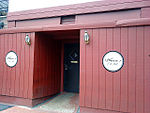Global Methane Initiative
The Global Methane Initiative (GMI) is a voluntary, international partnership that brings together national governments, private sector entities, development banks, NGOs and other interested stakeholders in a collaborative effort to reduce methane gas emissions and advance methane recovery and use as a clean energy source. National governments are encouraged to join GMI as Partner Countries, while other non-State organizations may join GMI's extensive Project Network. As a public-private initiative, GMI creates an international platform to build capacity, development methane abatement strategies, engage in technology transfer, and remove political and economic barriers to project development for emissions reduction. The initiative currently focuses on five sectors, which are known sources of anthropogenic methane emissions: agriculture, coal mining, municipal solid waste, municipal wastewater, and oil and gas systems.Through international cooperation, GMI seeks to reduce global methane emissions, the second largest contributor to atmospheric concentrations of greenhouse gases, in order to enhance economic growth, promote energy security, improve the environment, and reduce greenhouse gases. Other expected benefits include improving mine safety, reducing waste, and improving local air quality.
Excerpt from the Wikipedia article Global Methane Initiative (License: CC BY-SA 3.0, Authors).Global Methane Initiative
12th Street Southeast, Washington
Geographical coordinates (GPS) Address Website Nearby Places Show on map
Geographical coordinates (GPS)
| Latitude | Longitude |
|---|---|
| N 38.882583333333 ° | E -76.990194444444 ° |
Address
12th St and Pennsylvania Ave SE
12th Street Southeast
20003 Washington
District of Columbia, United States
Open on Google Maps







